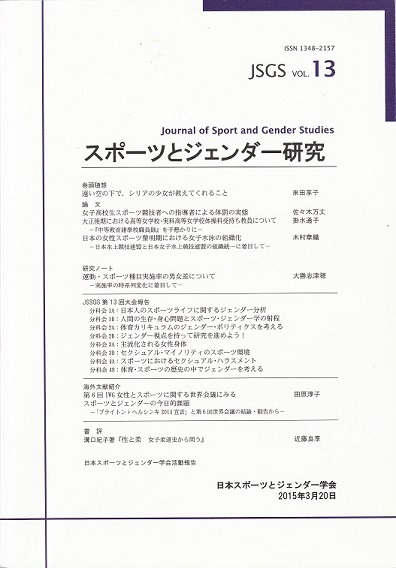Volume 7
Displaying 1-10 of 10 articles from this issue
- |<
- <
- 1
- >
- >|
-
2009Volume 7 Pages 2-3
Published: 2009
Released on J-STAGE: June 28, 2023
Download PDF (127K)
-
2009Volume 7 Pages 4-15
Published: 2009
Released on J-STAGE: June 28, 2023
Download PDF (926K) -
2009Volume 7 Pages 16-28
Published: 2009
Released on J-STAGE: June 28, 2023
Download PDF (1254K)
-
2009Volume 7 Pages 29-35
Published: 2009
Released on J-STAGE: June 28, 2023
Download PDF (304K)
-
2009Volume 7 Pages 36-39
Published: 2009
Released on J-STAGE: June 28, 2023
Download PDF (214K)
-
2009Volume 7 Pages 40-44
Published: 2009
Released on J-STAGE: June 28, 2023
Download PDF (234K) -
2009Volume 7 Pages 45-51
Published: 2009
Released on J-STAGE: June 28, 2023
Download PDF (317K)
-
2009Volume 7 Pages 52
Published: 2009
Released on J-STAGE: June 28, 2023
Download PDF (93K) -
2009Volume 7 Pages 53-70
Published: 2009
Released on J-STAGE: June 28, 2023
Download PDF (572K)
-
2009Volume 7 Pages 71-72
Published: 2009
Released on J-STAGE: June 28, 2023
Download PDF (192K)
- |<
- <
- 1
- >
- >|
